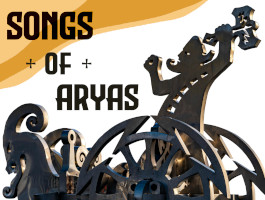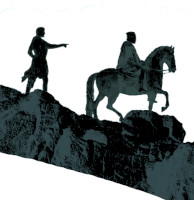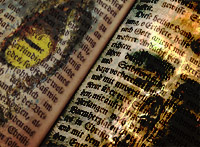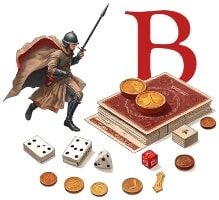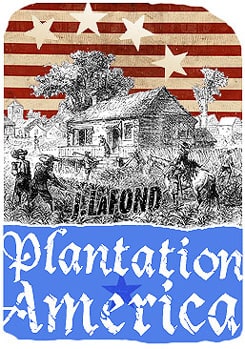I bought this book 24 years ago, read it 12 years ago as part of my research on the origins of blood sports, and just read it again to help prep for the Hemavore series I am writing with Dominick Mattero.
I will preface the review with the origins of this book. Flesh and Blood grew out of Reay Tannahill’s comprehensive study of human diet that became Food in History, a superb book that I leant to a lady who dumped me. I suppose dating me just to get her hands on a $30 book is perhaps the surest mark of a desperate reader. Reay’s other book was Sex in History, also superb, and my copy also co-opted by a former mating unit. Needless to say, and lucky for me, that no soon-to-be-estranged lady friend of mine ever coveted the following volume…
Flesh and Blood
The History of the Cannibal Complex
1975, Reay Tannahill
1988 , Dorset, NY, 209 pages
This lady is quite a smartass with the pen: “At this rate, killing and eating the family would have wiped it off the map in no time at all. And with the neighbors scattered at a density of only four people to every sixty miles, dining out would present insuperable problems.”
“…Neanderthal man is known to have cared for the sick and aged—and may (with perfect accuracy) have looked upon euthanasia as the ultimate pain-killer.”
“Until man discovered he had a soul, he must have felt—like Harry S. Truman—that the buck stopped here.”
Ms. Tannahill produced a crushingly informative and entertaining book that major publishers shunned. Thank you Dorset Press. Her concise narrative makes excellent use of a vast array of sources. She walks us from the dawn of consciousness to the present day with an intense and ever broadening survey of man’s propensity to eat man.
The psychology of flesh and blood; what it has ever meant to man spiritually, is at the core of this study. This is a must read for any student of religion, early warfare, vampirism, alchemy, superstition, and colonization. A very insightful revelation is her illumination of the effects that the Fourth Lateran Council of 1215 had on the extermination of European Jеwry and the ignition of the witch burning craze that lasted for half a millennium. Did you know that Jеws were originally hunted down and wiped out by medieval Christians because they were thought to be secretly torturing the holy wafers believed to be the actual physical body of Christ?
It was no accident that belief in vampires was rampant in a world where the faithful believed that drinking consecrated wine and eating consecrated bread was in actual physical fact the act of consuming the flesh and blood of their creator’s son. For the record, the Pope and kings [usually] did not want the Jеws killed. They needed them to manage their finances since making a profit through loaning money was a sin. The big bosses needed Jеws, and the dirt farmers slaughtered them all the more readily for it. If I do build that time machine I will not be taking a copy of Monopoly back to medieval Europe!
There were some surprising finds in Flesh and Blood as to the rampant scope and horrific nature of dietary cannibalism brought on by famine. There were periods in Europe and China when roving bands of cannibals behaved in a post-apocalyptic frenzy. This is invoked by the lurid Northern Renaissance painting on the dust cover by Heironymous Bosch. As bad as all that was, and the industrial scope of cannibalism in the Aztec empire, the worst episode had to be from Egypt in the year 1200-1201. The author provides in this book a full translation from the Arabic of an Egyptian doctor’s dispassionate account of what can best be described as a kind of zombie apocalypse; where no child was safe from the cook-pot, and even doctors were lured into back alleys to be butchered. This translation alone was worth the price of the book and then some.
Overall, the big message in Flesh and Blood is that no matter the time period, the culture, the religion, wealthy people have always been able to literally dine on, drink, and/or bathe in the flesh and blood of the poor without facing criminal penalties. From the first god-kings to Uruguayan soccer players, if you are rich, well-connected, and adhere to the dominant faith, you can eat your neighbor—provided he is poor, foreign, elderly, a child, or dead by no fault of yours—with no fear of punishment. Just yesterday, 6/24/2013 a modern east Coast cannibal was found not liable to face criminal charges for eating his boarder’s liver and heart –not to mention killing the poor guy—for reasons of mental health.
I would have to say that my favorite tidbit of information in this book is the fact that Jeremiah Johnson, famed mountain man, played in the early 1970’s film by Robert Redford as a reluctant warrior, is credited with eating 247 livers that once belonged to Crow Indians! I always thought that movie was a white wash. Jeremiah was a foot taller and much heavier than his enemies and killed some of them by kicking them in the chest.
I will read this one again—and no, you cannot borrow it.



